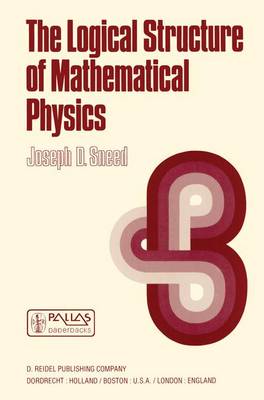Synthese Library
2 primary works
Book 35
This book is about scientific theories of a particular kind - theories of mathematical physics. Examples of such theories are classical and relativis tic particle mechanics, classical electrodynamics, classical thermodynamics, statistical mechanics, hydrodynamics, and quantum mechanics. Roughly, these are theories in which a certain mathematical structure is employed to make statements about some fragment of the world. Most of the book is simply an elaboration of this rough characterization of theories of mathematical physics. It is argued that each theory of mathematical physics has associated with it a certain characteristic mathematical struc ture. This structure may be used in a variety of ways to make empirical claims about putative applications of the theory. Typically - though not necessarily - the way this structure is used in making such claims requires that certain elements in the structure play essentially different roles. Some playa "theoretical" role; others playa "non-theoretical" role. For example, in classical particle mechanics, mass and force playa theoretical role while position plays a non-theoretical role. Some attention is given to showing how this distinction can be drawn and describing precisely the way in which the theoretical and non-theoretical elements function in the claims of the theory. An attempt is made to say, rather precisely, what a theory of mathematical physics is and how you tell one such theory from anothe- what the identity conditions for these theories are."
Book 186
An Architectonic for Science
by Wolfgang Balzer, C.Ulises Moulines, and J.D. Sneed
Published 30 June 1987
This book has grown out of eight years of close collaboration among its authors. From the very beginning we decided that its content should come out as the result of a truly common effort. That is, we did not "distribute" parts of the text planned to each one of us. On the contrary, we made a point that each single paragraph be the product of a common reflection. Genuine team-work is not as usual in philosophy as it is in other academic disciplines. We think, however, that this is more due to the idiosyncrasy of philosophers than to the nature of their subject. Close collaboration with positive results is as rewarding as anything can be, but it may also prove to be quite difficult to implement. In our case, part of the difficulties came from purely geographic separation. This caused unsuspected delays in coordinating the work. But more than this, as time passed, the accumulation of particular results and ideas outran our ability to fit them into an organic unity. Different styles of exposition, different ways of formalization, different levels of complexity were simultaneously present in a voluminous manuscript that had become completely unmanageable. In particular, a portion of the text had been conceived in the language of category theory and employed ideas of a rather abstract nature, while another part was expounded in the more conventional set-theoretic style, stressing intui tivity and concreteness.

